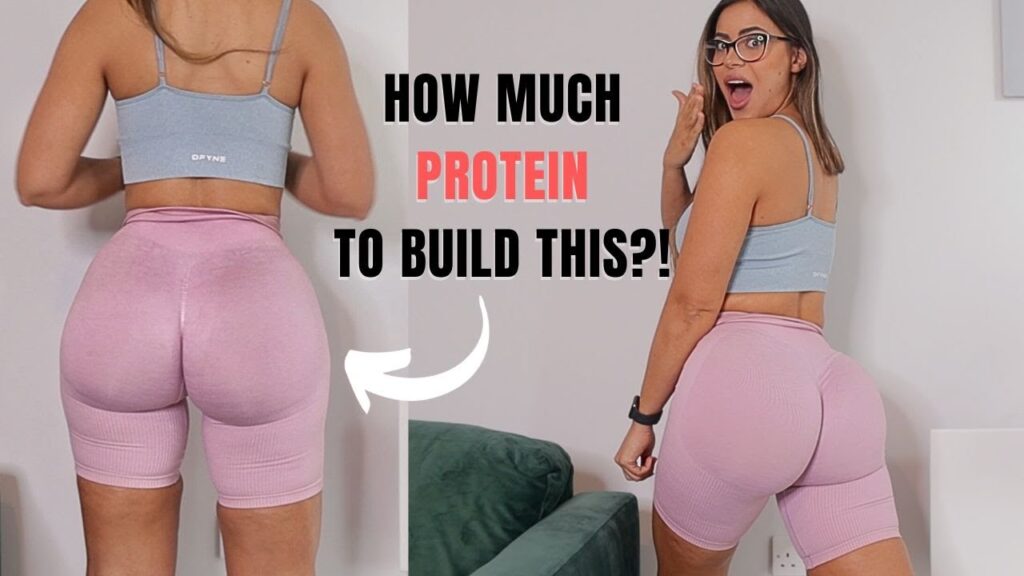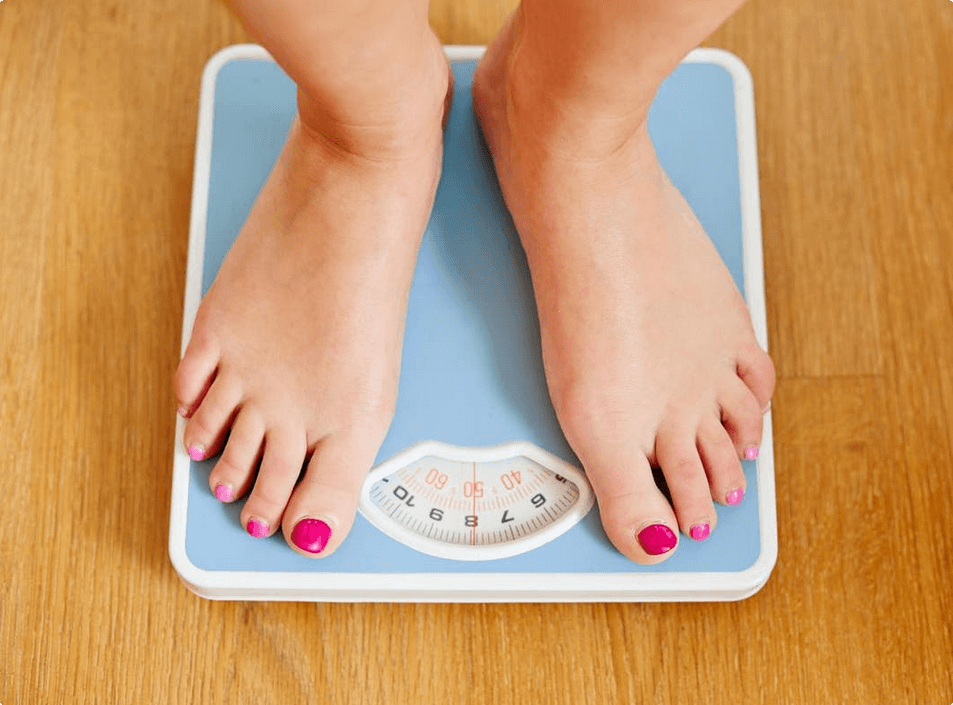If you’re looking to grow your glutes, you may be wondering how much protein you need to consume to see results.
While there is no one-size-fits-all answer to this question, understanding the role of protein in muscle growth can help you tailor your intake to your specific needs.
Protein is an essential nutrient that plays a crucial role in muscle building and repair.
In order to grow your glutes, you need to provide your body with enough protein to support this process.
However, the amount of protein you need will depend on a variety of factors, including your age, weight, and activity level.
The short answer is that you should aim for 0.8-1.2 grams of protein per pound of body weight per day to grow your glutes.
This amount is typically sufficient to support muscle growth, but if you are engaged in regular resistance training or sports, you may need as much as 1.5 grams of protein per pound of body weight daily to optimize your results.
But in this article, we’ll explore the science of protein and glute growth and provide you with practical tips for determining your ideal protein intake.
By the end of this guide, you’ll have a better understanding of how much protein you need to grow your glutes and how to incorporate it into your diet for optimal results.
Understanding the Role of Protein in Building Glutes
Protein is an essential macronutrient that plays a major role in building and maintaining muscle mass.
It helps repair and rebuild muscle fibers, allowing for stronger, more developed muscles over time.
When it comes to glute growth specifically, protein provides the building blocks needed for your body to create new muscle fibers and increase size in the gluteal muscles.
When you consume protein, your body breaks it down into amino acids, the building blocks of muscle proteins. These amino acids are then used to create new muscle proteins, a process known as muscle protein synthesis (MPS).
The more MPS that takes place in your body, the larger and stronger your glutes will become.
To maximize this effect , you need to consume enough protein to support MPS.
How protein supports glute development specifically
As with other muscles, consuming adequate protein helps promote muscle protein synthesis (MPS) in the glutes.
- This process allows the body to create new muscle fibers that lead to larger and stronger glutes over time.
- Protein helps to support stronger tendons and connective tissue that are critical for proper glute function.
- In addition to supporting MPS, protein can also help you maintain a healthy body composition.
Eating enough protein helps to preserve lean muscle mass while reducing body fat, which can make your glutes look stronger and more defined.
Determining Your Protein Needs for Glute Development
When it comes to glute development, the amount of protein you need will depend on a variety of factors, including your age, weight, and activity level.
In addition to the amount of protein, it’s also important to consider the quality and timing of your protein consumption.
To put things into perspective, if you are a 130-pound woman, this means consuming between 104-156 grams of protein per day. If you’re a 200-pound man, then you should aim for 160-320 grams of protein daily.
Below, we will go over more examples because it’s not only about the amount; other factors such as timing and type of protein are also important.
One thing you don’t want to confuse is that the amount of protein you need for glute development isn’t solely determined by your body weight. This is because the amount of muscle mass you have can also play an important role in your protein needs.
Generally, people with more muscle mass need more protein to get enough amino acids to support MPS.
Also, your total weight and lean body mass can affect how much protein you need, as can your activity level.
For example, an athlete or any person who is actively lifting weights and engaging in other activities that require muscle strength will need a bit more protein than someone who is sedentary.
Adjusting protein intake based on timing, activity level, and muscle-building goals
If you’re looking to build muscle, the timing of your protein consumption is important.
- For optimal results, you should try to spread your protein intake throughout the day, with at least 20-30 grams consumed after each workout session. This will help ensure your muscles have access to amino acids when they need them most.
- In addition to timing, your activity level and goals also play a role in determining your protein needs. For example, if you’re engaged in regular resistance training or a sport, you may need as much as 1.5 grams of protein per pound of body weight daily to optimize your results.
We will talk more about timing of protein below, but it is important to remember that the amount of protein you need is also dependent on your goals.
Now with all of that said, see some of the examples below for a better understanding of how much protein you may need to grow glutes:
Examples of the recommended daily protein intake
Here is a table showing how much protein you need to grow glutes for 10 individuals (7 female and 3 male).
Keep in mind that these values are approximate and can vary based on factors such as age, metabolism, and individual goals.
| No. | Gender | Total Weight (lbs) | Lean Body Mass (lbs) | Meal Frequency | Activity Level | Protein Amount Needed (g/day) |
|---|---|---|---|---|---|---|
| 1 | Female | 120 | 102 | 4 | Sedentary | 82-102 |
| 2 | Female | 140 | 119 | 5 | Lightly Active | 95-119 |
| 3 | Female | 160 | 136 | 4 | Moderately Active | 109-136 |
| 4 | Female | 130 | 110 | 6 | Very Active | 88-110 |
| 5 | Female | 150 | 128 | 5 | Sedentary | 102-128 |
| 6 | Female | 170 | 145 | 4 | Lightly Active | 116-145 |
| 7 | Female | 190 | 162 | 6 | Moderately Active | 130-162 |
| 8 | Male | 180 | 153 | 5 | Sedentary | 122-153 |
| 9 | Male | 200 | 170 | 4 | Lightly Active | 136-170 |
| 10 | Male | 220 | 187 | 6 | Moderately Active | 150-187 |
Note: Protein Amount Needed is calculated by using a range of 0.8-1.2 grams of protein per pound of lean body mass. This range can be adjusted based on individual goals and preferences.
Choosing High-Protein Foods for Optimal Glute Growth
When it comes to powering your glute development and muscle growth, the quality of your protein sources is just as important as the quantity.
Therefore, you should aim to consume a variety of high-quality protein sources throughout the day.
Examples of high-protein foods that support glute growth
Great sources of protein include lean meats such as chicken, turkey, and fish; eggs; dairy products such as Greek yogurt, cottage cheese, and milk; legumes such as beans and lentils; nuts and seeds; and plant-based protein powders.
Whey protein is also a great option for glute development because it’s fast-digesting and contains all of the essential amino acids your body needs. It’s also a rich source of leucine, which is a key amino acid for muscle protein synthesis (MPS).
You can also consider adding more complex carbohydrates such as sweet potatoes, oats, quinoa, and other starchy vegetables to your diet. These sources of complex carbs will provide your body with energy for workouts and help with muscle growth.
Finally, you should also incorporate healthy fats into your diet, such as avocados, olive oil, nuts, and seeds. These sources of healthy fats will provide your body with essential fatty acids and help maintain a healthy body fat percentage.
Yes, protein is the fundamental macronutrient for muscle growth, but it’s important to remember that a balanced diet is key to reaching your fitness goals.
So make sure you’re getting an adequate amount of protein and other macronutrients as well!
Tips to incorporating protein into each meal and snack throughout the day
There are many ways to incorporate protein into each meal and snack throughout the day. Here are some tips for getting enough protein to support muscle growth:
- Batch prep eggs: Try making a batch of hard-boiled eggs that you can grab on the go.
- Mix it up: To avoid getting bored with the same protein sources, explore new options and recipes that use different types of protein. This will help you find creative ways to incorporate protein into your meals and make it more enjoyable.
- Add protein-rich toppings: Enhance the protein content of your meals by adding toppings such as Greek yogurt, or cottage cheese.
- Experiment with protein powders: Protein powders are versatile and can be added to various dishes like smoothies, oatmeal, yogurt, or baked goods. This is a convenient way to increase protein content without changing the overall taste or texture of your meal.
- Embrace legumes: Beans, lentils, and chickpeas are excellent plant-based protein sources that can be easily incorporated into many dishes. Add them to salads, soups, stews, or use them to make veggie burgers or hummus.
- Make protein the main dish: Plan your meals around a protein source, such as grilled chicken or tofu, and then build your sides and vegetables around it. This approach ensures that protein is the focus of your meal.
- Swap out carb-heavy sides: Replace traditional carb-heavy sides, like rice or pasta, with protein-rich alternatives like quinoa or lentils. This not only increases your protein intake but also adds variety to your meals.
- Use high-protein dairy: Opt for Greek yogurt or cottage cheese as a base for dips, dressings, and sauces, or add them to your meals as a side or topping. This can help increase your protein intake without making significant changes to your meal plan.
- Combine plant-based proteins: Pairing different plant-based proteins, like beans and rice or lentils and barley, can create a complete protein source that provides all essential amino acids required for muscle growth.
- Plan ahead: Meal prepping can help ensure that you always have protein-rich options on hand. Prepare protein-packed dishes in advance, portion them out, and store them in the fridge or freezer for easy access throughout the week.
These are just a few ways to increase your protein intake and make sure you’re getting enough for your muscle-building goals.
Eating a variety of whole foods is the best way to ensure that your body gets all the essential nutrients it needs.
The importance of variety in protein sources for optimal muscle growth
It is also important to consume a variety of proteins for optimal muscle growth.
- Eating different types of protein helps ensure that you are getting all the essential amino acids your body needs.
- Animal proteins, such as poultry and fish, provide all the essential amino acids, while plant-based proteins, like beans and lentils, provide some but not all.
- To get the most benefit from eating plant-based proteins, it is important to combine different sources.
For example, combining legumes and grains can create a complete protein source.
Eating a variety of proteins can also help ensure that you get the vitamins and minerals your body needs for optimal muscle growth and repair.
Protein per kilogram of body weight is the most accurate way to determine an individual’s daily protein requirement.
Timing Protein Intake for Optimal Glute Growth
It does not matter if you eat the exact amount of protein each day, if your timing of protein intake is missed.
You can eat all the protein you want, but if it is not spread out throughout the day, you will not see maximal results.
Research has shown that consuming 20-40 grams of protein per meal will optimize protein synthesis and maximize glute growth.
It is also beneficial to consume some protein before and after your workout for optimal muscle repair and growth.
You can have one huge meal with all your protein or spread it out throughout the day. It is up to you and what works best for you and what fits your lifestyle.
But if you want to maximize glute growth, it is important to spread out your protein intake throughout the day.
The benefits of spreading protein intake throughout the day
The benefits of spreading protein intake throughout the day are numerous.
- By spreading out your protein intake, you can increase the rate of protein synthesis, which is important for muscle growth and repair.
- Eating 20-40 grams of protein per meal will ensure that your body has enough available amino acids to build muscle.
- Furthermore, by having multiple meals with smaller portions of protein throughout the day, it can help to control hunger and cravings.
In addition, it can be easier to hit your daily protein requirements when you spread out your intake throughout the day instead of trying to consume a large amount at one meal.
Consuming protein after exercise helps promote this process by providing the amino acids necessary for muscle repair and growth.
Protein consumed after exercise has been shown to stimulate the release of hormones that are important for muscle growth and repair. It is important to consume protein after exercise within an hour for optimal recovery and muscle growth.
This can be done either by consuming a protein shake or eating real food with some protein in it.
The role of protein in reducing muscle soreness and fatigue
Protein helps to reduce muscle soreness and fatigue by providing the amino acids necessary for muscle repair and growth.
It also helps to reduce inflammation, which can speed up recovery. Additionally, it can help improve glucose uptake and utilization in the body, which are important for energy production and reducing fatigue.
So when you combine the benefits of muscle repair, reduced inflammation, and improved energy production, you can see that protein plays an important role in reducing muscle soreness and fatigue.
Frequently Asked Questions
After reading the above information, you may still have questions about how to fuel your glute growth. Here are some frequently asked questions about protein intake and glute growth:
Can you consume too much protein when trying to grow your glutes?
Yes, consuming too much protein when trying to grow your glutes can have negative effects on your health and fitness goals.
While protein is an essential nutrient for building and repairing muscle tissue, excess protein consumption can lead to weight gain and other health problems.
Excessive protein consumption can have negative effects on the body, such as weight gain and increased fat storage, especially if consumed in excess of daily calorie needs.
Extra protein consumed in excess of what the body needs can be converted into glucose, leading to excess calories and fat gain.
Therefore, the total amount of protein should be balanced with the total caloric intake, taking into account the type of exercise and workout regimen.
To achieve glute gains, a calorie surplus is essential, which means you need to consume more calories than your body needs to maintain its weight.
However, this should be done within reason and not with a “junk food” approach to dieting. It is advisable to consume healthy carbohydrates such as fruits, vegetables, and whole grains, alongside healthy sources of protein, to ensure that the body receives the necessary nutrients for optimal performance.
Can you get enough protein from a plant-based diet to grow your glutes?
Yes, you can get enough protein from a plant-based diet to grow your glutes.
Plant-based proteins are found in legumes, nuts, seeds, and grains. Protein supplement powders made from plant sources are also available for those who want to increase their daily protein intake.
Vegan dieters should ensure to include a variety of plant-based proteins in their diet, such as lentils, beans, quinoa, and nuts.
It is important to note that vegan diets typically contain lower amounts of certain essential amino acids than animal-based proteins. Therefore, it is important to combine different types of plant sources throughout the day to get the full range of amino acids for optimal muscle growth.
Should you increase your protein intake as you increase your glute workouts?
The short answer is yes. Increasing your protein intake can be beneficial as you increase your glute workouts.
Glute muscles are some of the largest in the body and require adequate amounts of protein for muscle gain and repair.
In general, a diet rich in healthy foods and resistance training, including glute exercises like glute bridges, lunges, and squats, can help you achieve a shapely butt.
Progressive overload is crucial, meaning gradually increasing the intensity or weight of your workouts to keep challenging your muscles. And remember, building stronger muscles takes time, so be patient and consistent with your workout routine.
Can you eat too much protein when trying to grow your glutes?
Yes, you can eat too much protein when trying to grow your glutes, and it can potentially harm your health.
While protein is necessary for muscle growth and repair, consuming excessive amounts of protein will not necessarily lead to more muscle gain.
The human body has a limit to how much protein it can absorb and utilize at one time, and consuming more protein than needed can lead to extra calories and potentially harm your organs.
When you consume excessive amounts of protein, the extra calories are stored as fat, which can contribute to weight gain.
Additionally, a high-protein diet can be hard on the kidneys, especially if you have pre-existing kidney problems.
Can you grow your glutes with just one high-protein meal a day?
Yes, you can grow your glutes with just one high-protein meal a day.
That being said, it is not ideal for muscle growth.
The best way to get the protein you need for glute gains is to spread your protein intake out throughout the day in smaller, evenly distributed meals.
Ideally, a daily diet should include a balance of proteins, complex carbohydrates, and healthy fats. This ensures that your body gets all the essential nutrients needed for optimal muscle growth.
It is also important to include a variety of protein sources, such as lean meats, seafood, eggs, dairy products, nuts and seeds, legumes, and other plant-based proteins.
Finally, it is important to note that the amount of protein needed for optimal muscle gain depends on factors such as age, gender, body composition, and type of exercise.
Conclusion
Protein is essential for building and repairing muscle, including your glutes.
The recommended daily protein intake for glute growth varies based on your body weight and activity level, but a general guideline is to consume 0.8-1.2 grams of protein per point of body weight (or 1.6-2.5 grams of protein per kilogram of body weight) each day to maximize muscle growth, with a focus on quality proteins from real foods rather than supplements.
When you workout, the demands on your body for protein increase, so it will need around
Although it is possible to increase your glutes with just one high-protein meal a day, it is best to spread out your protein intake throughout the day in small, evenly distributed meals.
That’s how your glutes can grow with the right protein intake!





